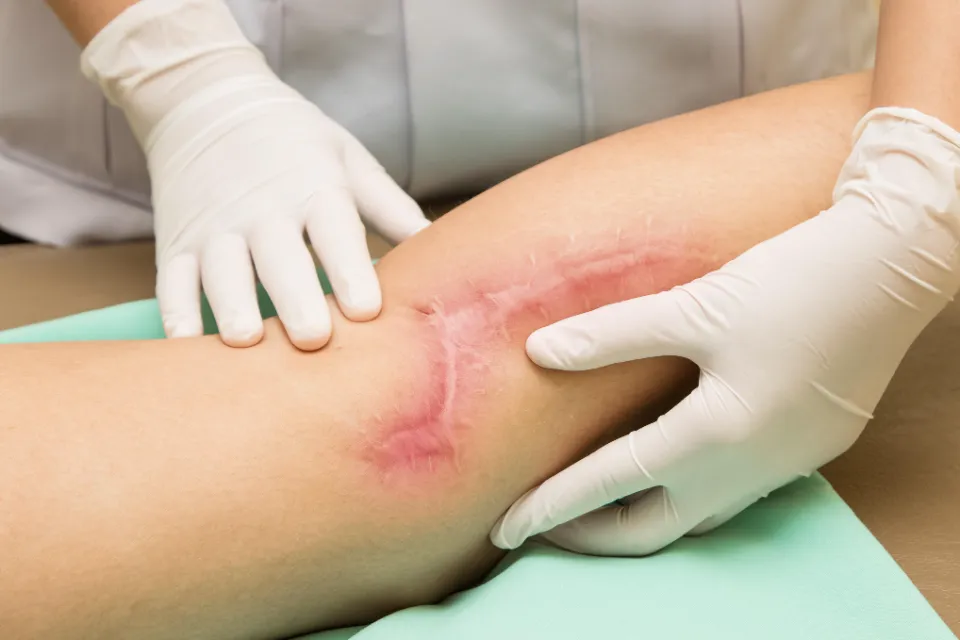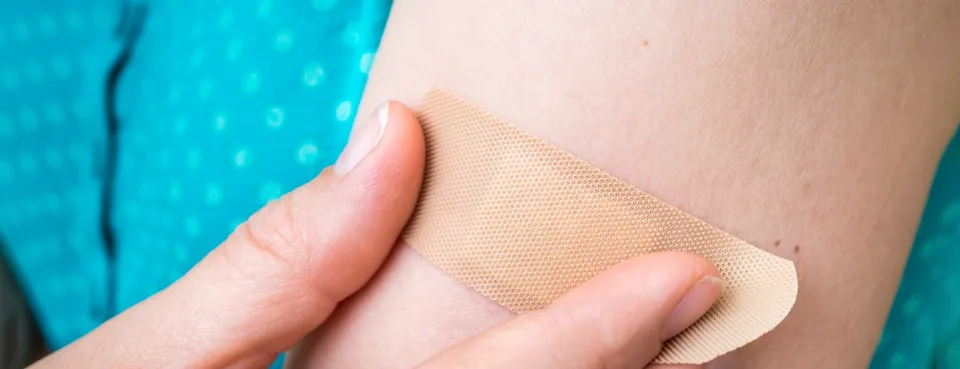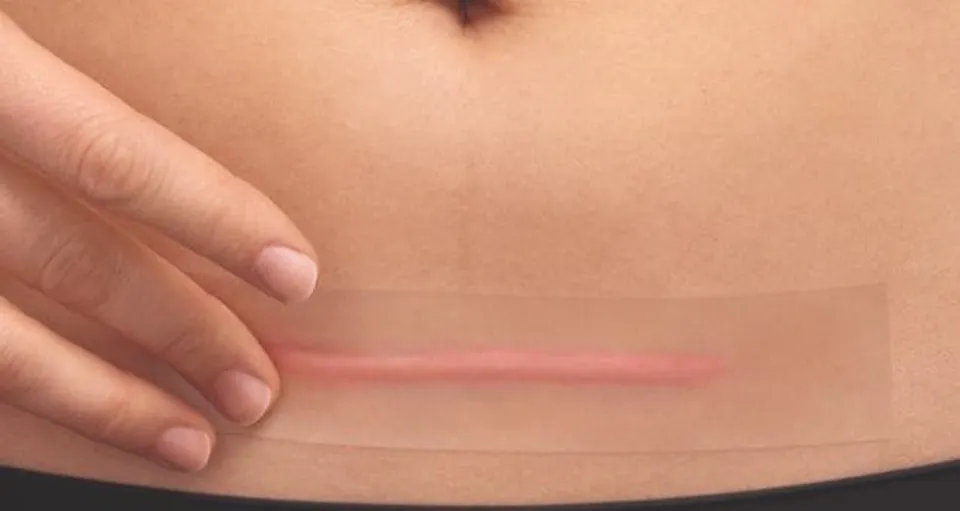As part of your body’s healing process after an injury, scars develop on your skin. Your injury’s degree of severity and its rate of healing will determine how big of a scar you have. Usually, superficial wounds and cuts that only affect your top layer of skin leave no visible scars.
As part of your body’s natural healing process, scars develop after an injury. Scars never fully vanish, but they do get lighter with time. By administering first aid right away, you can give your wound the best chance of healing without leaving a scar.
In light of this, here are 6 ways to stop new wounds from leaving scars.
What is a Scar?
Scars are caused by the tearing of the dermis, the layer of skin beneath the epidermis. The dermis is rich in collagen, which is responsible for our skin’s elastic fibers, which, among other things, keep our skin supple. Any injury to the dermis can result in scarring.
“Think of our normal collagen like a basket weave, very nice and even,” Dr. Khetarpal clarifies. “When we sustain a wound or scar on our skin, it sets off a wound-healing response that can either produce just enough collagen or a little bit more. It will never be exactly like the skin you had there before.”
Older people are more prone to scarring than younger people because our bodies lose collagen as we age. Additionally, the part of your body that was injured and how much blood is flowing to it may determine whether a wound is likely to scar.

“Your face and scalp tend to heal the fastest because we have the most circulation there,” Dr. Khetarpal says, “but a cut on your foot, where circulation isn’t as good, could take weeks to heal.”
Types of Scars
Ideal scarring is minimal and light, but scars can take a variety of forms:
- Hypertrophic scars: These scars, which are visible within the boundaries of the initial injury, are thick, raised, and frequently reddish.
- Atrophic scars: These indented scars, like those from chickenpox or acne, develop when the skin’s collagen production is insufficient to fully replace the lost tissue.
- Keloid scars: When the skin attempts to heal itself by producing an excessive amount of collagen, it produces thick, raised scars that extend beyond the area of injury. Keloid scars can be genetically predisposed, and Black people are more likely than other populations to experience them.
How to Prevent Scarring After Your Scab Falls Off?
If they form a scab, cuts and scrapes take longer to heal. The same procedure you would use for other types of wounds should be followed when your scab comes off. In order to prevent irritation and infection, try not to touch the pink wound under your scab. Keep it bandaged.
Keep the Wound Clean
According to the National Library of Medicine, broken skin from a wound increases the risk of bacterial infection. Dermatologists advise keeping the wound clean for the duration of the process because it will heal in stages.
Dermabrasion
Dermabrasion is an exfoliation technique that aids in lessening the visibility of scars. The top layer of skin covering your scar will be removed by a dermatologist using a wire brush or diamond wheel. After having their scars dermablasted, most people notice a 50% improvement. For those, however, who have autoimmune diseases or sensitive skin, it might not be a wise choice.
Leave Those Scabs Alone
Scabs are our skin’s natural bandages, so don’t touch them and give them time to heal. Your injury won’t get better if you pick at it; it won’t get better. Do you think you’re picking at scabs while you’re asleep? Get yourself some cotton gloves to wear to bed.
Laster Therapy
Laser therapy removes the top layer of skin by focusing light beams. A scar cannot be entirely removed, but it can be made to look better. Laser therapy typically results in healing that takes three to ten days.
Cryotherapy
Keloid and hypertrophic scars may be treated with cryotherapy. During cryotherapy, a doctor will use a needle to freeze your scar with nitrogen vapor.
Intralesional Steroid Injection
A corticosteroid is injected intralesionally into your scar to enhance its appearance. It is suitable for keloid and hypertrophic scars. Over the course of several months, the injections might be repeated.
Don’ts for Scar Prevention
Don’t Pick at the Wound
Generally speaking, dermatologists advise against picking at your skin at any time. Picking at it only seems to make things worse, whether it’s a fresh wound or an active breakout. The AAD claims that it can exacerbate acne and scarring.
Keep your hands off open wounds or freshly formed scabs and avoid picking them. “Picking at wounds during the healing process leads to increased inflammation and scarring,” It can also increase the likelihood of infection from bacteria on your hands, according to Salyards.
According to the Cleveland Clinic, compulsive skin picking by some dermatillomania sufferers can result in injury, infection, and scarring. Picking your skin can cause old wounds to reopen, ultimately slowing their healing.
So, allow nature to heal your skin. Only use clean hands to handle wounds, and only do so when it’s necessary to clean, moisturize, or replace the dressing on the wound.

Don’t Wait Too Long to Get Stitches
Although medical intervention isn’t always necessary for wounds to heal, you might benefit from getting stitches depending on how bad your wound is. Getting stitches can help close the wound and hasten wound healing. Scars develop after the wound has healed. In accordance with the AAD, they might also aid in lessening the visibility of scarring.
Dermatologists advise against waiting for deep cuts to heal on their own before getting stitches. “If stitches are needed, they must be sewn as soon as possible when the injury is new,” says Board-certified dermatologist Aanand N. Geria, MD, is the creator of Geria Dermatology in Rutherford, New Jersey. “A dermatologist might decide against stitching a wound if too much time has passed because bacteria or germs may have gathered there.”
If you’re unsure whether you need stitches, consult Dr. Geria suggests going to the doctor right away for additional assessment.
Don’t Ignore Sun Protection
Everyone ought to ideally use sunscreen every day. The Skin Cancer Foundation claims that it guards against sun damage and skin cancer. Dermatologists advise you to take sun protection even more seriously if you recently had a wound and want to lessen the possibility of scarring.
“Wearing SPF 30 or greater daily and reapplying every two hours while outdoors is the general recommendation,” Salyards says. “Scar prevention may be achieved by using sunscreen.” Further, Brauer advises avoiding direct sunlight in the area altogether.
Conclusion
Following the removal of the scabs, the entire scar remodeling process takes a year. During this time, your scar may go through various phases of appearance, such as becoming darker or redder or thicker or more textured. However, your scar is not likely to significantly alter on its own after a year.



